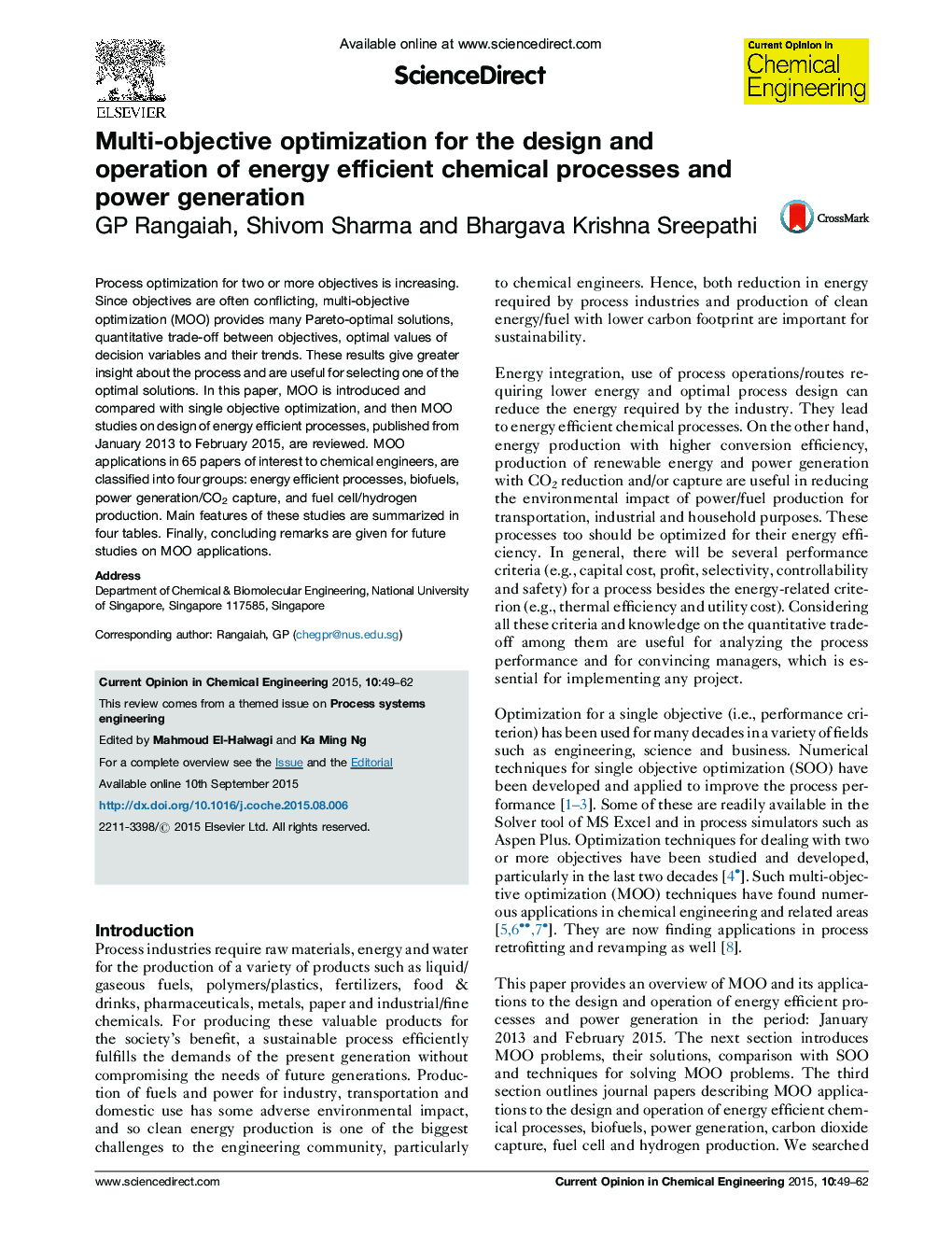| Article ID | Journal | Published Year | Pages | File Type |
|---|---|---|---|---|
| 174408 | Current Opinion in Chemical Engineering | 2015 | 14 Pages |
•Provides an overview to multi-objective optimization (MOO) and techniques for it.•Features of single objective optimization and MOO are compared.•Recent MOO studies on energy efficient processes are grouped into four areas.•Four tables summarize key points of 65 studies on MOO applications.•Useful reference for researchers/practitioners considering MOO for process design.
Process optimization for two or more objectives is increasing. Since objectives are often conflicting, multi-objective optimization (MOO) provides many Pareto-optimal solutions, quantitative trade-off between objectives, optimal values of decision variables and their trends. These results give greater insight about the process and are useful for selecting one of the optimal solutions. In this paper, MOO is introduced and compared with single objective optimization, and then MOO studies on design of energy efficient processes, published from January 2013 to February 2015, are reviewed. MOO applications in 65 papers of interest to chemical engineers, are classified into four groups: energy efficient processes, biofuels, power generation/CO2 capture, and fuel cell/hydrogen production. Main features of these studies are summarized in four tables. Finally, concluding remarks are given for future studies on MOO applications.
